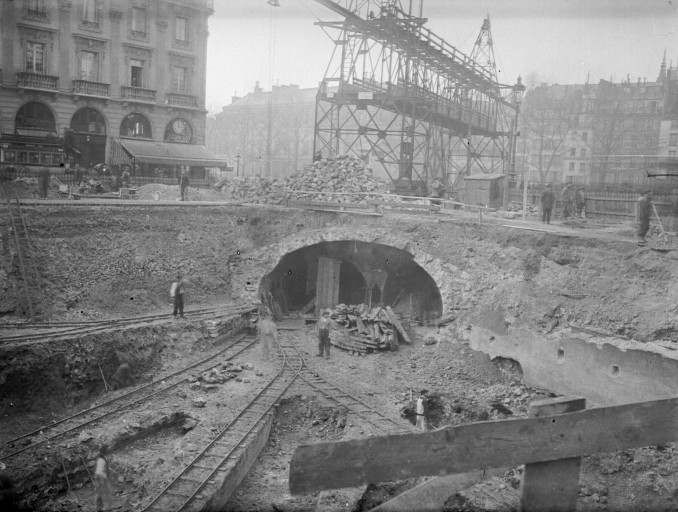1900 Paris Metro Opened

The Paris Métro, opened in 1900 with 6.25 miles, has expanded to 157 miles across 16 lines and 300 stations, becoming a vital part of Parisian life and a cultural icon. Designed by engineer Fulgence Bienvenüe, the system reflects Art Nouveau aesthetics and efficient urban planning. Continually modernized, the Métro remains essential for Paris’s daily transport and historical landscape.
The Paris Métro, short for Métropolitain, is an iconic underground rapid transit system that first opened to the public on July 19, 1900. This event marked the completion of the first line, which spanned a mere 6.25 miles (10 kilometers) and connected Porte de Vincennes in the east to Porte Maillot in the west, coinciding with the 1900 Paris Exposition, a world fair. Built primarily to accommodate the growing population and alleviate congestion on Paris streets, the opening of the Métro was a significant milestone in Parisian transportation and was celebrated as a major engineering feat. Today, the Paris Métro has expanded to 157 miles (251 kilometers) and includes 16 lines with over 300 stations, making it one of the most extensive and busiest underground networks in the world.
The idea of an underground railway in Paris was first discussed in the 19th century, as traffic problems grew alongside the city’s expansion. Debates ensued over whether the system should be elevated or underground, as well as who would control it—the national government or local authorities. In the end, it was decided that the system would be entirely underground, under the jurisdiction of the city of Paris. Fulgence Bienvenüe, an engineer with a background in designing urban infrastructure, oversaw the project. He is often referred to as the “father of the Paris Métro,” as his designs and dedication were instrumental in shaping the system. Bienvenüe’s plans emphasized efficiency and accessibility, setting a precedent for future expansions.
The construction process involved significant challenges, including the need to tunnel through dense urban areas without disturbing existing buildings and infrastructure. Workers encountered difficult conditions, often digging by hand and using rudimentary tools. Despite these challenges, construction progressed swiftly due to a robust workforce and effective planning. The stations were designed in the Art Nouveau style, with intricate ironwork entrances designed by architect Hector Guimard, which remain some of the most recognizable features of the Paris Métro.
Following its initial success, the Métro rapidly expanded over the next few decades. The original line was extended, and additional lines were built to serve a growing number of neighborhoods and suburbs. By 1930, the network had reached nearly 60 miles (97 kilometers). The construction of each new line and station contributed to Paris’s architectural landscape and helped integrate outlying areas into the urban core, facilitating the growth of greater Paris.
World War II slowed the Métro’s expansion, and sections of the network suffered damage during the occupation. However, after the war, the city prioritized rebuilding and extending the network. By the 1970s, new technologies, including automated trains, were introduced to enhance efficiency and safety. Line 14, opened in 1998, became the first fully automated line and set a new standard for modern metro systems.
In addition to its practicality, the Paris Métro has become a cultural icon. It appears in numerous films, songs, and literature and is known for its distinctive design, particularly the Art Nouveau entrances, the unique tiling in the stations, and the omnipresent signage. Each station is unique, often named after nearby landmarks, people, or historical events, providing a living history of Paris within the transportation network.
Today, with over 157 miles of track and ongoing projects aimed at further expansion, the Paris Métro is an essential part of daily life for millions of Parisians and visitors. The system continues to adapt to modern needs, including accessibility upgrades, improved security, and efforts to reduce its environmental impact. The Paris Métro stands as a testament to urban planning and engineering, representing both the city’s rich history and its commitment to efficient, accessible public transportation.
 >
>